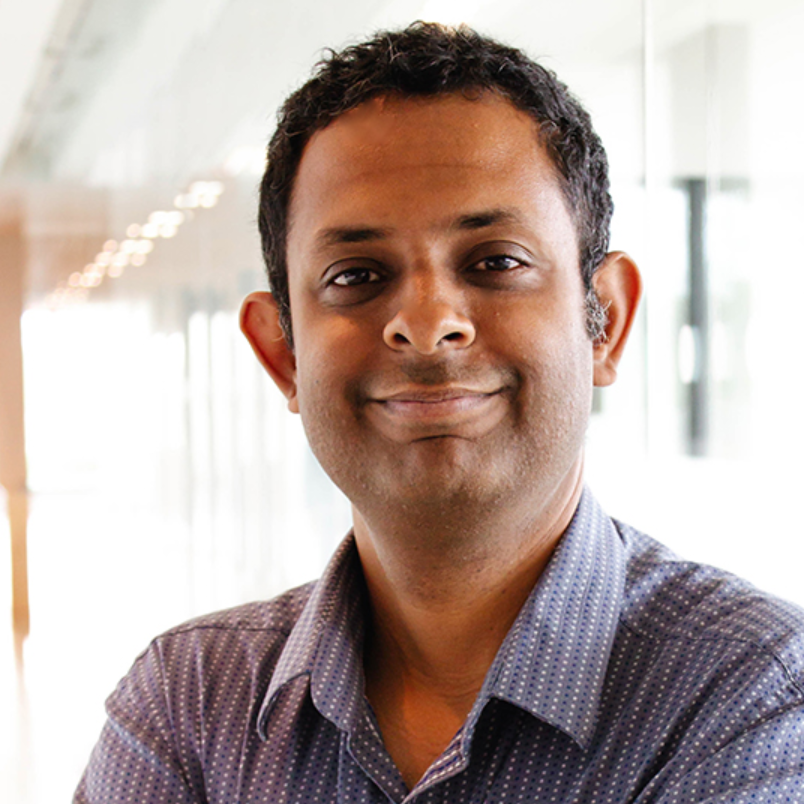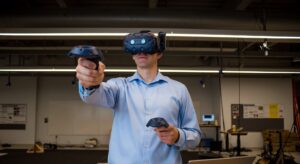It starts with a closed door.
A rural emergency room shuts down without warning. It’s late. It’s snowing. The nearest hospital is hundreds of kilometers away and there’s no family doctor to call. In the backseat, a patient clutches their chest, growing colder by the minute. That closed door isn’t just an inconvenience. It could be the difference between life and death.
Across Ontario and throughout Canada, temporary ER closures have become a symbol of a healthcare system under immense strain, where staffing shortages, vast distances, and surging demand converge to create serious risks for patient care. In 2023 alone, there were over 600 temporary emergency department closures in rural Ontario, often leaving residents with no choice but to travel long distances to receive urgent care.1
But what if we could prevent these closures before they happen?
That’s the question driving Dr. Salimur Choudhury, a computer scientist at Queen’s University and founder of the GOAL Lab (short for Global Optimization, Analytics, and Learning). His lab builds decision-making tools powered by algorithms, data, and AI, tools that could help healthcare administrator decide, in real time, how to deploy limited resources where they’re needed most.

“One of my research priority areas is optimizing health care resources,” he said. “Over the past few years, we’ve been developing data-intensive, data-driven methods to support health care policymakers.”
At its core, Choudhury’s research addresses a deceptively simple question: how do we allocate scarce resources – physicians, supplies, or even transportation routes – in a way that supports real people in real time?
Some of his most urgent work focuses on ER closures in Northern Ontario. With limited staff supporting a vast geographical area, hospitals in the north frequently shut their emergency departments on evenings and weekends. For patients, these closures can mean driving for hours to find help, often in hazardous winter conditions. “We’re analyzing patterns in ER visits and studying which emergency rooms are closing and when,” he explained. “The idea is to use data to guide decisions, to figure out when and where closures can be avoided.”
But the barriers to care in Northern communities go beyond hospital staffing. They also include the seasonal roads that connect them. Many remote areas rely on winter roads—temporary routes built over frozen lakes and waterways —that are only operational for a few weeks each year. Climate change is shortening these windows by causing warmer winters and unpredictable freeze-thaw cycles, cutting off critical links between patients and healthcare. Choudhury’s lab is using geospatial and climate data to anticipate these risks. “We are combining satellite imagery and trying to analyze which winter roads are disappearing,” he said, “because if and when that road is closed, the ER will also close, and that may impact the service delivery.”

By identifying communities at risk of being stranded, his team aims to help decision-makers plan ahead, reallocating resources before patients are left without options. To make this relocation possible, his lab is building mathematical models that support regional coordination, enabling better use of travel nurses, shared staff pools, and dynamic scheduling, all grounded in patient and hospital data. While access to these data remains a challenge, Dr. Chourhury’s team is painstakingly gathering what it can from public sources.
But Choudhury isn’t stopping at ERs. In another project, his team is helping reduce administrative burden in family medicine. “In family health teams, physicians often spend a lot of time filling out forms, but not all of them need to be completed by doctors,” he said. “We’re looking at how we can redistribute that work to other allied professionals.”
By analyzing health records from the Queen’s Family Health Team and partnering with a start up company , the lab developed an AI-based autofill system for medical referral forms, saving time for doctors and potentially improving workflow across team-based care. “The time savings for physicians were significant,” Choudhury said.
These innovations point to a broader shift that Choudhury is pursuing — one where intelligent systems don’t just offer recommendations, but take action to solve and prevent problems in real time.
“What I’m envisioning is called decision intelligence,” he explained, “where systems don’t just analyze data and generate algorithms but actually make the decisions themselves.”
This vision may sound futuristic, but his team is already working on it. In one project, they’re building a tool that converts natural language (plain, human descriptions of a problem) into the mathematical equations needed to solve it. For example, someone might type out their scheduling or logistics challenge, and the algorithm would automatically generate an optimization model and code, ready to run.
“The idea is that a user could describe their problem in natural language,” he said, “and the system would generate the equations and code needed to solve it.”
Ultimately, these tools are designed to help healthcare leaders and government agencies make faster, smarter and more equitable decisions, especially in communities where resources are stretched. But for research like this to drive real-world change, it has to reach the people in charge of policy and planning. That’s why Choudhury is strategic about where he publishes his work.
“When you develop a particular methodology, some of it needs to be published in computer science journals,” he said. “But we also need to reach the right audience, and healthcare policymakers may never read a standard computer science journal.”
To bridge this gap, Choudhury not only publishes in technical outlets, but he also seeks opportunities in health-sector venues where clinical leaders and system planners are more likely to engage. These opportunites include journals, conferences and collaborations with clinicians. By tailoring communications to this audience, Choudhury ensures his research doesn’t just push the boundaries of algorithm design, but informs better care, smarter systems and more responsive policy.
Despite the complexity of his work, Choudhury is focused on practical impact. He partners with hospitals, startups and government agencies, and trains the next generation of researchers in this field. And he continues to ask how novel algorithms can help to solve systemtic problems in healhcare.
“We’re trying to find small algorithmic approaches,” he said, “and connect those dots to make a meaningful difference.”
In a healthcare system buckling under pressure, these small things might just be the breakthroughs we need. But the significance of this work goes far beyond technical achievement. By designing systems that can allocate resources intelligently, deliver care more efficiently, and anticipate infrastructure-related challenges before they become crises, Choudhury’s research lays the foundation for a healthcare system that is more equitable, accessible, and resilient — one that serves everyone, no matter their postal code.
- Rural Ontario Municipal Association. (2024). Fill the gaps: Bringing care closer to home in rural and northern Ontario. https://www.roma.on.ca/sites/default/files/assets/IMAGES/Home/ROMA%20Report%20-%20Fill%20the%20Gaps%20Closer%20to%20Home%20January%2021%202024%20FINAL%20Draft-Reduced.pdf


